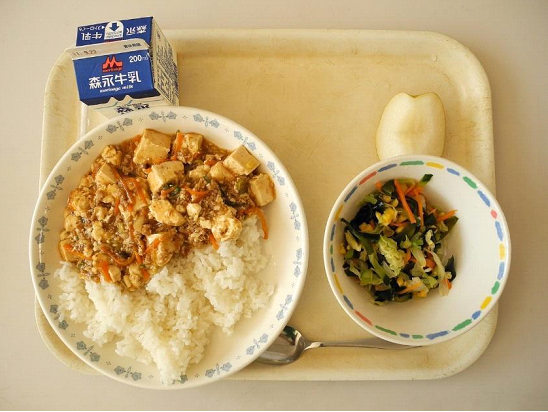
More than a meal: A lunchtime lesson in Japan’s “Shokuiku”
- September 10, 2025
- 0

It’s around 12 p.m. at an elementary school in Nagasaki Prefecture, Japan. The classroom hums with quiet excitement as students slip on white smocks and matching caps.
Moving purposefully between the lunch cart and the rows of desks, they form teams. This is not just a lunch break—it is learning.
Here, lunch is not served in a cafeteria. It is not bought from a vending machine.
In Japan, school lunch—kyūshoku—is a shared ritual, a lesson in nutrition.
It shows care for others and promotes a sense of responsibility through interactions with others. Additionally, it is an essential component of the Japanese food and nutrition education known as “Shokuiku.” What does Shokuiku mean? Shokuiku (食育) is more than nutrition education. The cultivation of knowledge, skills, and attitudes necessary to make healthy dietary choices, maintain health, and connect with the cultural and social meanings of food is how the Basic Act on Shokuiku of 2005 in Japan defines it legally. It integrates health, moral, and physical education, and is taught not just in textbooks—but through practice and experiences.
A lesson at lunchtime
Today’s menu in the classroom includes chestnut rice, salt-grilled mackerel, pickled fried eggplant, and Takeda Farm’s potato miso soup. A carton of milk completes the tray. The ingredients are locally sourced, the flavors traditional.
The students who serve the meal are called kyūshoku tōban – lunch duty leaders. They serve classmates with care, kindness and precision.
Once everyone has their tray, a student steps to the front of the class and announces, “Let’s say thank you to the people who prepared our food.” Then all say in unison: “Itadakimasu!” – a customary expression of gratitude.
As they eat, a registered dietitian explains where the mackerel came from, why miso is fermented, or why chestnuts are served today. The meal becomes a springboard for curiosity, cultural pride, and nutritional literacy.
Behind the scenes: how the system works
Japan’s school lunch program is a product of decades of inter-sectoral policy effort, managed by the Ministry of Education, Culture, Sports, Science and Technology, collaborating with health, agriculture and local government.
It reaches nearly every child in public elementary and junior high schools nationwide.
Meals are carefully designed by licensed dietitians to meet specific nutritional standards for school children.
Parents are required to pay a monthly fee, which is subsidized for families with low incomes. However, the policy emphasizes universal provision rather than targeted welfare. Importantly, the meals are eaten in the classroom, together, reinforcing inclusion and equality. No child is left behind.
Why it matters
This approach isn’t just about food—it’s about forming habits, fostering empathy, and teaching care for others.
School lunch is recognized as a pedagogical opportunity in a nation where childhood obesity rates are among the lowest in the OECD and where life expectancy indicators consistently rank high. Shokuiku also addresses broader societal challenges: food waste, environmental sustainability, and declining agricultural ties.




















